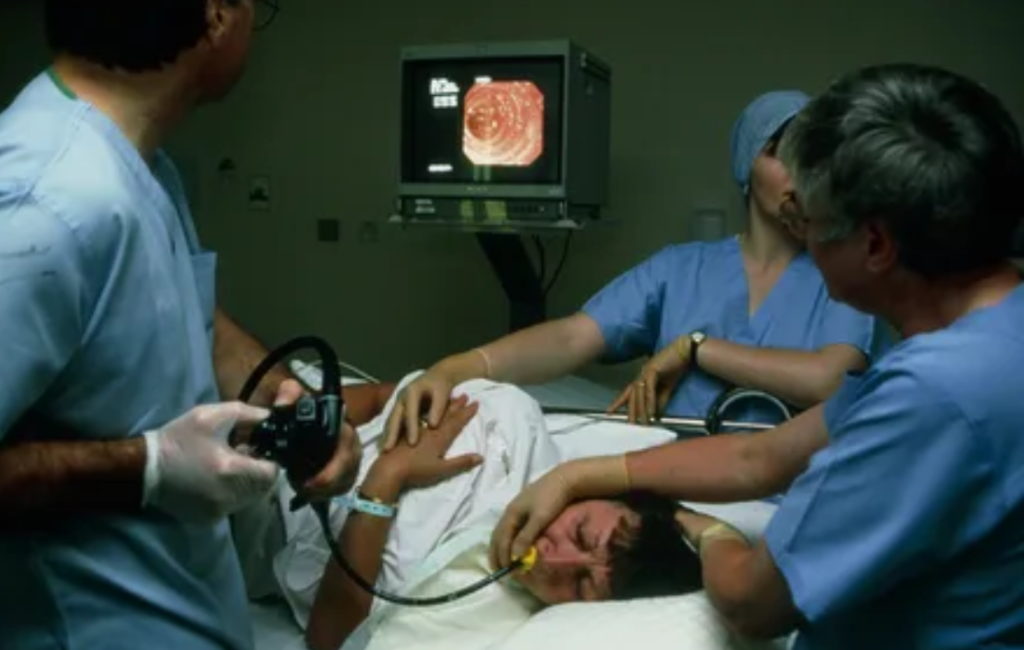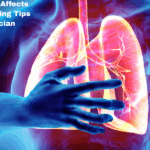
Bronchoscopy is a medical procedure that allows doctors to examine the inside of the lungs and air passages. It involves the use of a thin, flexible tube called a bronchoscope, which is passed through the nose or mouth, down the throat, and into the lungs. This tool has a light and a camera at the end, providing a clear view of the respiratory system. Bronchoscopy is an essential diagnostic tool for detecting and diagnosing various lung diseases. However, as with any medical procedure, it has its own set of advantages and potential drawbacks.
Benefits of Bronchoscopy
- Accurate Diagnosis: Bronchoscopy is highly effective in diagnosing lung diseases such as infections, tumors, chronic cough, and unexplained lung problems. It allows doctors to directly view the airways and obtain tissue samples for further testing.
- Minimally Invasive: Compared to surgical procedures, bronchoscopy is minimally invasive. There are no large incisions, which means less pain and a quicker recovery time for patients.
- Direct Visualization: The ability to see the inside of the lungs in real-time is a significant advantage. It enables doctors to spot abnormalities, blockages, or growths that might not be visible through imaging tests like X-rays or CT scans.
- Tissue Sampling: During a bronchoscopy, doctors can collect tissue samples (biopsies) from the lungs. These samples are crucial for diagnosing conditions like lung cancer, infections, and inflammatory diseases.
- Treatment Delivery: In addition to diagnosis, bronchoscopy can be used for treatment purposes. For example, doctors can remove blockages, take out foreign objects, or treat bleeding areas directly through the bronchoscope.
- Monitoring Disease Progression: For patients with chronic lung conditions, bronchoscopy can help monitor disease progression and response to treatment. It provides valuable information that helps in adjusting treatment plans.
- Low Complication Rate: While there are risks associated with bronchoscopy, it generally has a low complication rate when performed by experienced professionals. The benefits often outweigh the potential risks.
Risks of Bronchoscopy
- Bleeding: One of the most common risks is bleeding, especially when a biopsy is taken. Although usually minor, severe bleeding can occur in rare cases.
- Infection: There is a risk of infection following bronchoscopy. However, this is uncommon and can be managed with antibiotics if it occurs.
- Pneumothorax: A condition where air escapes into the space between the lung and chest wall, causing the lung to collapse. It is a rare complication but can be serious and may require additional treatment.
- Allergic Reactions: Some patients may experience allergic reactions to the sedatives or local anesthetics used during the procedure.
- Discomfort and Soreness: After the procedure, patients might feel throat soreness or discomfort. This is generally a temporary condition and typically resolves within a few days.
- Preparing for a Bronchoscopy
Before undergoing bronchoscopy, patients are given specific instructions to ensure the procedure goes smoothly. These instructions typically include:
- Fasting: Patients are usually asked to fast for several hours before the procedure to reduce the risk of aspiration.
- Medication Adjustments Before undergoing the procedure, it may be necessary to discontinue or adjust certain medications. This is especially important for blood thinners, as they can increase the risk of bleeding.
- Arrangements for Recovery: Patients should arrange for someone to drive them home after the procedure, as the sedatives used can impair their ability to drive.
What to Expect During a Bronchoscopy
Bronchoscopy is typically performed in a hospital or outpatient clinic. Here’s what patients can expect:
- Sedation and Anesthesia: Patients are given sedatives to help them relax and local anesthesia to numb the throat.
- Insertion of the Bronchoscope: The bronchoscope is gently inserted through the nose or mouth and guided down into the lungs.
- Examination and Sampling: The doctor examines the airways and may take tissue samples if necessary.
- Procedure Duration: The procedure usually takes between 30 to 60 minutes, but this can vary depending on the complexity of the case.
- Recovery: After the procedure, patients are monitored for a short time before being allowed to go home.
After the Procedure
Following bronchoscopy, patients might experience mild throat discomfort, cough, or a small amount of blood in their sputum. These symptoms are typically temporary. It’s important to follow post-procedure instructions, such as avoiding eating or drinking until the numbness in the throat wears off and taking prescribed medications as directed.
Summary
Bronchoscopy plays a crucial role in the diagnosis and treatment of various lung diseases. Its benefits, such as accurate diagnosis, minimal invasiveness, and direct visualization, make it an essential procedure in respiratory medicine. However, it is not without risks, including bleeding, infection, and potential breathing difficulties. Patients should discuss these risks and benefits with their healthcare provider to make an informed decision.
At Dr. Yogesh Agrawal’s clinic in Thergaon, Pune, patients receive expert care and guidance on lung health. Known for its excellence, the clinic, often referred to as the “Best Chest Clinic in Pune,” ensures that patients are well-informed and comfortable throughout their bronchoscopy procedure.




